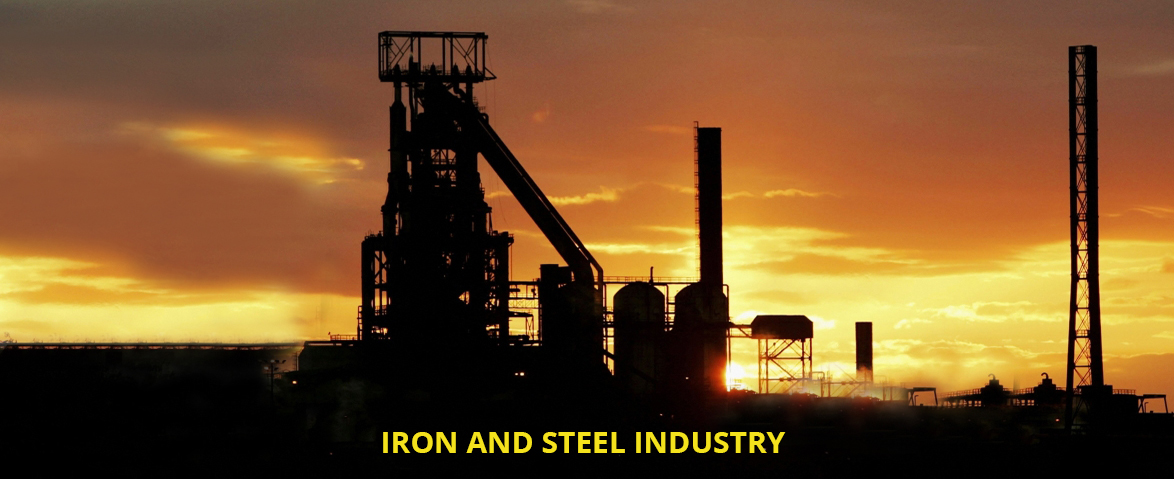BENEFICIATION
BENEFICIATION 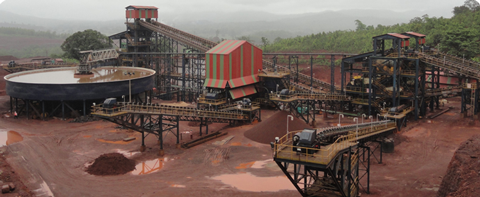 With the grade of ores continuing to diminish, the pressure for getting more out of existing mines is only going to rise. Lower-grade sources of iron ore generally require beneficiation. The technologies to achieve these goals are classical, complementary and well defined. The biggest challenge is to get ensure that our customers get the best value-for-money proposition. The Iron, Steel & Power Industry needs an associate who knows the Process Technology and has the experience to deliver the desired results and FE Techno is a premier organization capable of providing solutions.
With the grade of ores continuing to diminish, the pressure for getting more out of existing mines is only going to rise. Lower-grade sources of iron ore generally require beneficiation. The technologies to achieve these goals are classical, complementary and well defined. The biggest challenge is to get ensure that our customers get the best value-for-money proposition. The Iron, Steel & Power Industry needs an associate who knows the Process Technology and has the experience to deliver the desired results and FE Techno is a premier organization capable of providing solutions.
"Beneficiation" of Iron Ore includes concentration of Fe contents by physical elimination of unwanted gangue. Beneficiation is the process of regulating the product size and improving chemical and physical characteristics of Iron Ore.
Normally, raw Iron Ore is collected from different mines due to which there is a variation in the quality & chemical composition of the raw material, which is not desirable for Pelletizing. Hence, these ores are blended together and beneficiated to ensure its quality is near the ideal requirement. The quality of pellets and therefore, the output of the Pellet Plant, is dependent on the quality of output from Beneficiation Plant.
The beneficiation of iron ore is typically carried out using water as separation medium. Hence, it is also referred to as wet beneficiation process. At a given facility, the beneficiation technique may require between 600 and 7,000 gallons of water per ton of Iron concentrate produced, depending on the beneficiation method used. Modern techniques are deployed to reuse an average of 90 percent of the water.
Most beneficiation operations will result in the production of three materials: a concentrate; a middling and tailing (waste).
The product quality is essentially defined by the Fe content, level of SiO2 and Al2O3 contamination. The process always aims at maximizing Fe recovery by subjecting the coarser particles to grinding and size reduction operations to fine particles and further processing in order to recover iron.
- Methods of Size reduction & control : Production of required size distribution from feed material is achieved by crushing and grinding operations. The equipment’s used are Crusher, Rod mill and Ball mill.
- Enrichment : Process to improve value of minerals by washing or separation Washing of Iron ore is done using wet screens & scrubbers.
Separation – Magnetic separation & Leaching - Upgrading :Upgrading is the last stage of beneficiation process which includes a process namely, Froth flotation – Generation of uniform fine bubbles to separate valuable from waste.
IRON ORE PELLETIZATION
IRON ORE PELLETIZATION What is iron ore pelletizing?
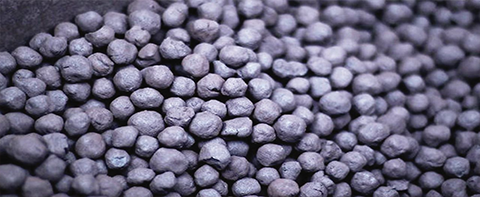 Pelletizing is the process through which ground iron ore fines are transformed into heat hardened spheres called “iron ore pellets”. These pellets are suitable for use in an iron-making furnace such as a blast furnace or electric arc furnace. Each iron making furnace has specific iron ore pellet chemistry requirements that govern the design criteria of an iron ore pelletizing plant. In its end product form, a typical iron ore pellet is roughly spherical in shape, measuring from six mm to sixteen mm in diameter and having a crushing strength of over 200 Kg, although some variations in these typical parameters can be specified and targeted in the design process.
Pelletizing is the process through which ground iron ore fines are transformed into heat hardened spheres called “iron ore pellets”. These pellets are suitable for use in an iron-making furnace such as a blast furnace or electric arc furnace. Each iron making furnace has specific iron ore pellet chemistry requirements that govern the design criteria of an iron ore pelletizing plant. In its end product form, a typical iron ore pellet is roughly spherical in shape, measuring from six mm to sixteen mm in diameter and having a crushing strength of over 200 Kg, although some variations in these typical parameters can be specified and targeted in the design process.
In iron ore pelletizing process, finely ground iron ore is moistened to required level and mixed with a binder. This mixture is continuously fed to a balling disc or balling drum that forms spheres from the ore fines. The spheres, prior to firing, are called green pellets. Upon discharge from the balling apparatus, the green pellets are separated according to size. Those within the desired size range are transported and fed into an indurating process where they are hardened (indurated) by baking in an oxidizing atmosphere. Off-size pellets are recycled back through the process. The induration is carried out in a high temperature furnace designed and optimized to achieve the required pellet chemistry.
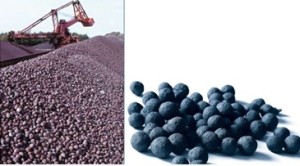 In the final form, the finished pellet product is commonly called “fired pellets” indicating that they have been indurated and hardened. After the pellets are indurated, they are transported and screened as necessary to the size required by the customer.
In the final form, the finished pellet product is commonly called “fired pellets” indicating that they have been indurated and hardened. After the pellets are indurated, they are transported and screened as necessary to the size required by the customer.
Typical unit operations for iron ore pelletizing
In an iron ore pelletizing plant, the indurating process can be carried out by one of two technologies;
- Grate Kiln technology
- Straight Grate technology.
Both technologies are viable and proven, and are described in further details below as to when they are used and why.
Additive grinding mills - Mills are required for the grinding limestone, dolomite, coal /coke breeze, and bentonite. Additives are typically ground in either air swept vertical roller mills or horizontal ball mills, depending on the capacity needs. In some applications co-grinding of the limestone, dolomite and coal or coke breeze is appropriate. Generally Bentonite is ground separately.
Iron ore rotary dryers - If a dry feed preparation process is designed, rotary dryers prepare the iron ore for feeding to the dry grinding mill by removing all the moisture from the ore.
Iron ore grinding mills - The mills are either dry grinding mills or wet grinding mills depending on the process design. Wet grinding mills produce slurry for downstream filtration prior to the mixing process. Dry grinding mills produce a final grind directly suitable for feeding to the mixing process.
Filtration equipment - If a wet grinding process path is adopted , filtration equipment is provided to remove water from the iron ore slurry emanating from the wet grinding mills. Depending on the chemical characterization of the iron ore, either Vacuum Filters or Pressure Filters are used.
Slurry handling equipment - The wet grinding process requires equipment to pump, store and thicken the slurry prior to filtration. Rubber lined pumps transport the slurry to and from large slurry storage tanks, a concentrate thickener, and eventually the filtration equipment. A rake type thickener is used in the process to increase the density of the slurry prior to filtration.
Mixer - Mixers are used to blend different pelletizing feed components, iron ore and additives to a homogeneous balling feed. Generally two types of mixers are used for this process; (1) horizontal - paddle type mixer (2) Vertical type mixers.
Balling disc - It receives a finely ground mixture of iron ore and other additives and produce uniform spherical pellets through the addition of moisture and the dynamic forces of rotation.
Roller screens - The green balls are fed onto a roller screen where a series of rotating rollers separate and transport the green pellets to the indurating machine. Depending on the capacity of the plant either a single deck roller screen (SDRS) or double deck roller screen (DDRS) is used.
The under size & over size green pellets are recirculated to the balling circuit. The “on-size” material is fed to the indurating machine.
Indurating machine - Depending on the indurating process employed, either the Grate Kiln indurating or Straight Grate indurating machine will be used. Each process has specific equipment tailored to the process.
Process fans - Both the Grate Kiln and Straight Grate processes use a series of fans to move and distribute ambient air and hot process gases through the systems. These fans have specific process requirements which dictate the capacities and sizes of the fan.
Iron Ore Testing - A most critical part in the upfront engineering of a prospective iron ore pelletizing plant project is the iron ore testing program. For iron ore pellet plants, the testing program is called “Pot Grate Testing”. Pot grate testing is the basic tool to determine the optimal process & quality of the raw materials being supplied to achieve the specified production rate.
The pot grate testing allows the plant to be designed for the lowest capital, operating and maintenance costs.
SINTER PLANT
SINTER PLANT 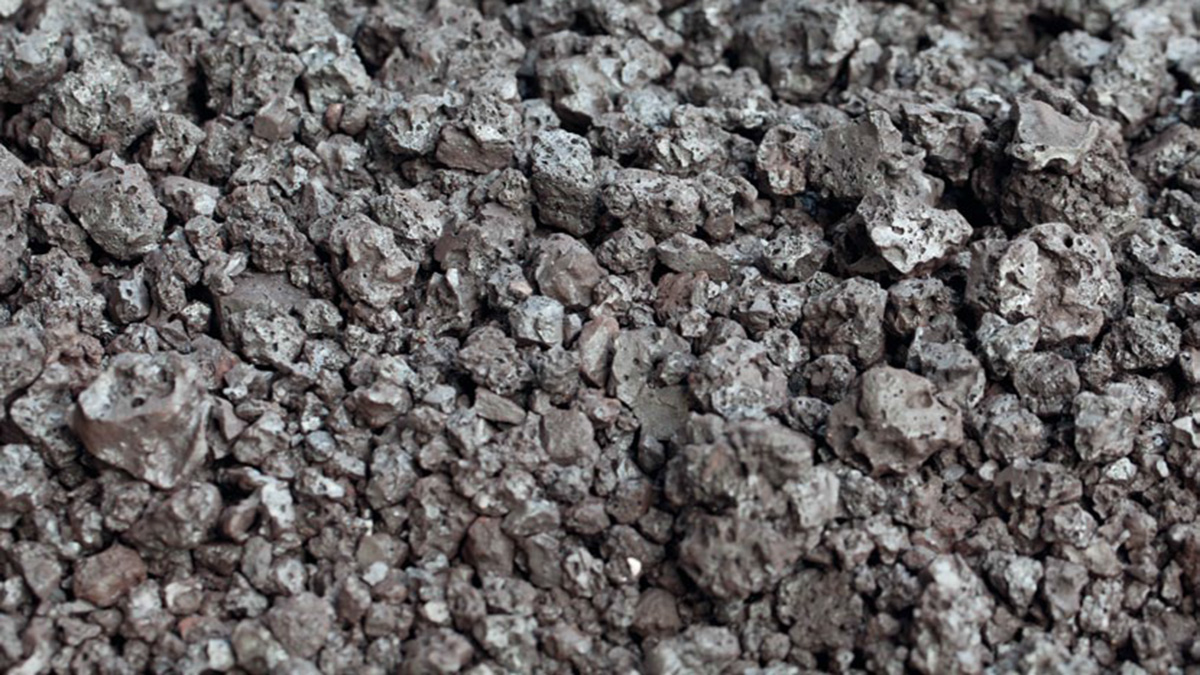 The purpose of the sinter plant is to transform raw material fines into a coarse size iron ore sinter, ready to be charged to the blast furnace. Sintering of fine particles into a porous clinker – sinter – is necessary to improve the permeability of the burden, making reduction easier. A high quality sinter has high reducibility, which reduces the intensity of blast furnace operations and reduces coke demand.
The purpose of the sinter plant is to transform raw material fines into a coarse size iron ore sinter, ready to be charged to the blast furnace. Sintering of fine particles into a porous clinker – sinter – is necessary to improve the permeability of the burden, making reduction easier. A high quality sinter has high reducibility, which reduces the intensity of blast furnace operations and reduces coke demand.
The Principle of sintering
The principle of sintering involves the heating of iron ore fines along with flux and coke fines or coal to produce a semi-molten mass that solidifies into porous pieces of sinter with the size and strength characteristics necessary for feeding into the blast furnace. It is basically an agglomeration process achieved through combustion.
The Product Sinter
The product of the sintering process is called sinter and shall ensure good quality characteristics in terms of Chemical properties, Grain size distribution, Reducibility index and crushing strength.
PROCESS DESCRIPTION
The process of sintering begins with the preparation of the raw materials consisting of iron ore fines, fluxes and fuel. Sinter fines returning from the product screen, always form part of the feed material in all sinter plants.
The ore and additives are fed into the revolving drum for homogenous mixing with addition of the water. These materials are mixed in a revolving drum. Water is added in order to form proper micro-pellets of the raw mix and to obtain adequate permeability. The raw mix is carefully conveyed to the sintering machine to ensure that permeability is maintained. A hearth layer of controlled size sinter is fed to the pans as a protection layer of the grate. Above the hearth layer the raw mix is fed to present level.
The surface of the raw mix is ignited using gas burners. Air is sucked through the ignited layer from the pan bottom and sintering proceeds downward in the material bed. Gas circuit is fully leak proof, not allowing false air to be sucked by the system. This saves power in the waste gas circuit. Sintering temperatures may reach 1300 – 1480 degree.
Discharge from the sinter pan is conveyed to cooling area. After the cooling process sinter is discharged into the crushing station. After the sinter cake is crushed to a pre-determined particle size it is discharged onto a conveyor, which transfers the sinter from crusher to storage area.
Getin touch

Fe Techno Engineering and Power Solutions.
#20, Lakshmi, 3rd floor,Shankarmutt Road
Shankarapuram, Basavangudi, Bangalore – 560004.
Tel: +91-9611441967, 9341104574, 9379013917
Landline: 080 - 4096004
Email: info@fetechno.com
.png)

